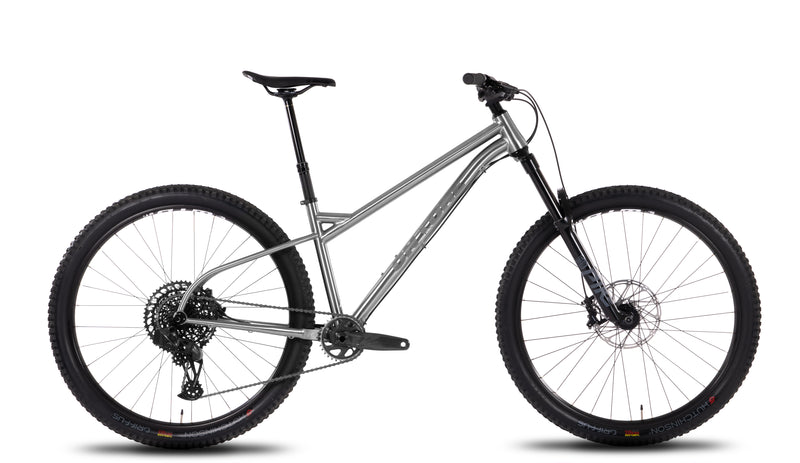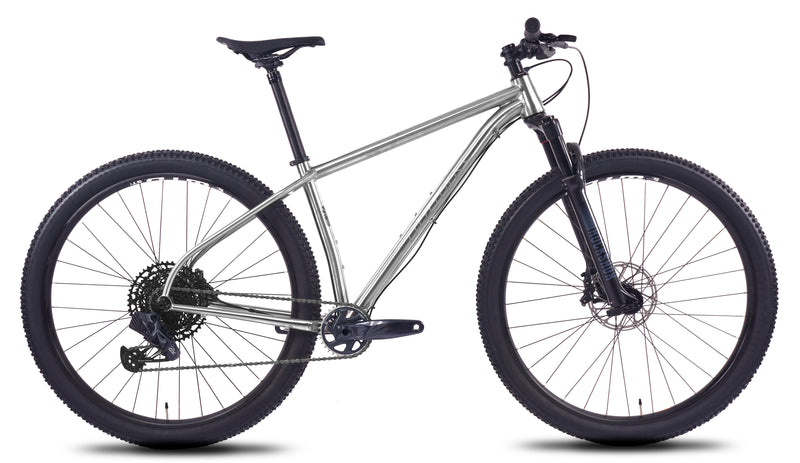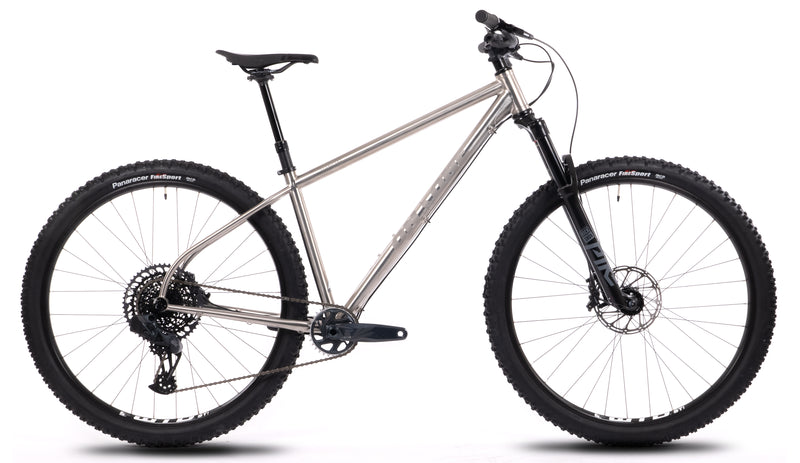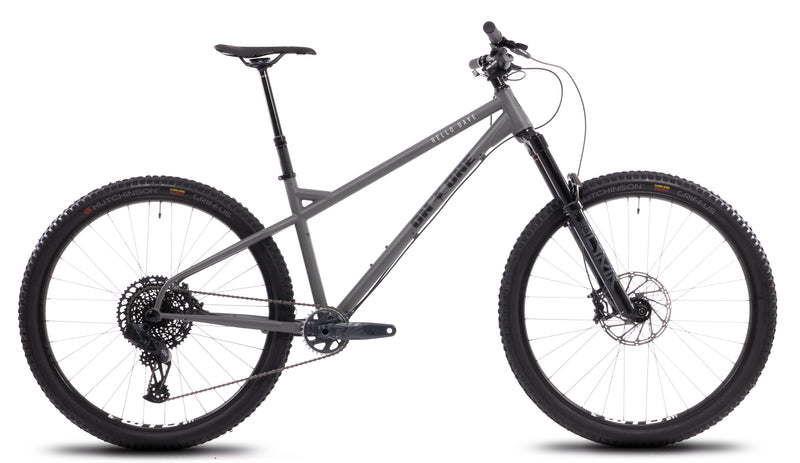What are the different types of mountain bikes?
21 February 2023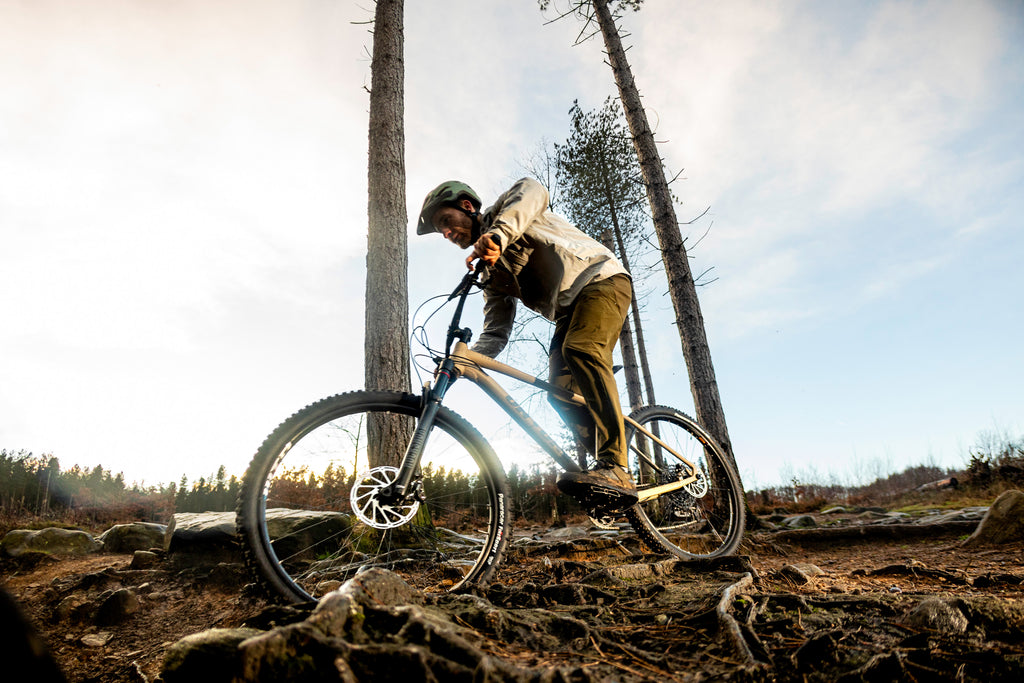

With so many different mountain bikes out there, it can be difficult deciding which one is best for you. To make the right choice when buying your off-road bike, it helps to get to grips with the various types of mountain bike available. From hardtails to full suspension, and from cross-country to downhill, in this post we break down the options you need to know about.
What is mountain biking?
Taking things back to basics for a minute, it’s always good to keep in mind what this sport is all about. In essence, it’s riding a bike off-road, often over rough and difficult terrain. Because of this, mountain bikes need certain features, such as a strong frame for durability, flat, wide handlebars for control, and broad tyres with plenty of grip to help absorb impacts and provide traction. Whichever type of mountain bike you go for, it’ll have these key characteristics.
Which type of mountain bike should I get?
Broadly speaking, mountain bikes can be broken down into two main categories: hardtail and full suspension. Hardtail bikes are great all-rounders that you can use for anything from touring and trail riding to commuting. With no suspension at the rear, they’re simpler builds, meaning they’re often lighter and cheaper than models with full suspension, and with less components involved are easier to maintain. In contrast, full sus bikes have both front and rear suspension, meaning the rear wheel tracks the ground more closely, providing extra comfort and control on rough terrain.
However, things start to get more complicated when you consider the different disciplines within the sport - namely trail, enduro, downhill and cross-country. Each of these styles of mountain biking tests rider and machine in different ways - and therefore requires different characteristics in a bike.
Trail bikes
Available in both hardtail and full sus, trail bikes are hugely popular because of their versatility. Typically offering between 110mm and 150mm of suspension travel, meaning the amount of movement provided by a suspension fork or rear shock, they can handle technical descents and steep climbs with ease. If you want to tackle a variety of terrains and challenges with confidence, a trail bike could be the one for you. Check out our range of trail bikes to discover more about their features.
Enduro
Similar to trail bikes, enduro bikes can be used for all-day riding. However, they’re particularly well adapted to descending. Offering around 160mm to 180mm of suspension travel, these models can handle the roughest and steepest slopes. They also have powerful brakes for much-needed control on difficult descents. As their name suggests, these bikes really come into their own when the going gets rough and fast. On smoother, less challenging gradients, they may feel a little sluggish compared to other models.
Downhill
Downhill mountain bikes are built for, well, downhills. With around 200mm of suspension travel, they’re tailor made to absorb impacts on precipitous descents. Everything about these bikes is built to cope with the extra forces generated when tackling challenging terrain and jumps. For example, the tyres, wheels and other components are stronger. However, bear in mind that you can’t easily ride these bikes uphill, so you’ll either have to use a lift or push to get back to the top.
Cross country
Cross country bikes include both hardtail and full sus designs and typically offer up to 100mm of suspension travel. They’re crafted to be highly capable on relatively smooth, straightforward off-road descents, while also delivering efficiency on climbs. They’re a popular choice for general cycling on paths and gravel tracks, in addition to singletrack trails. With lightweight, durable frames, our XC bikes boast all-terrain specific gearing and their frame geometry makes for a comfortable riding position.
What size mountain bike do I need?
So, based on the type of riding you plan to do, you should have a good idea of the type of bike to look out for. But what size bike frame should you choose? Get this right and you’ll have a comfortable setup that offers maximum control, but get it wrong and you risk aches and pains, not to mention a substandard performance in the saddle.
When you’re choosing models, make sure you pay close attention to the size chart provided. This will suggest a height range for each bike frame size.
It’s also a good idea to tweak your setup from time to time. When you sit on a bike, your body makes contact with the frame in three places - the bars, the pedals and the saddle. It’s the relative position of these elements that determines how comfortably the bike fits you. You might think you have everything sussed, but switching things up could improve the feel of your ride. Bear in mind that tyre sizes vary too. There was a time when mountain bikes had 26-inch wheels as standard, but now there are also 27.5-inch and 29-inch versions to choose from. Smaller wheels offer snappier acceleration and are often preferred for more twisty trails as they provide a quicker change in direction, while larger wheels deal with obstacles more easily. Combined with bigger tyres, they can also deliver increased stability and grip.
